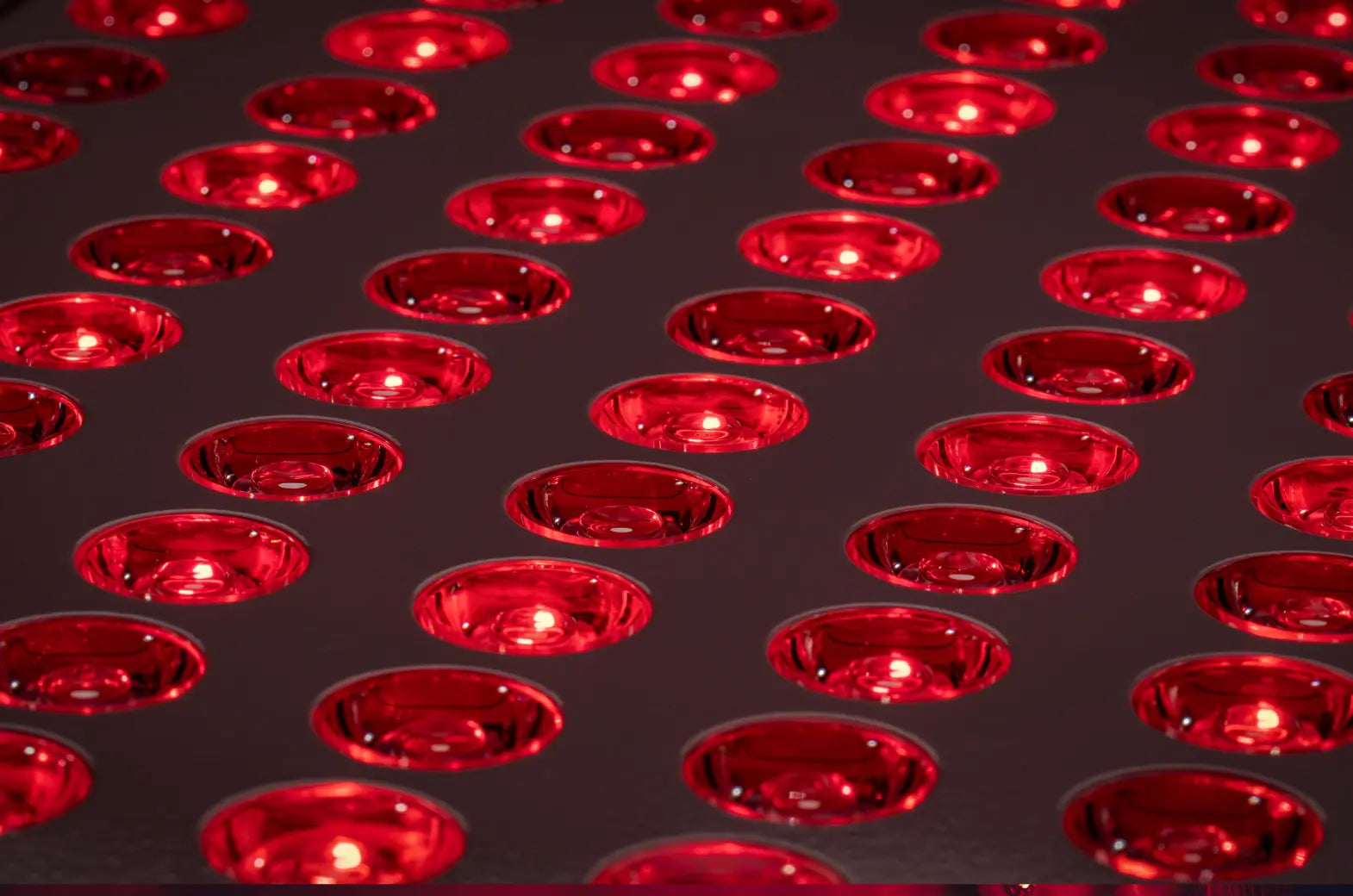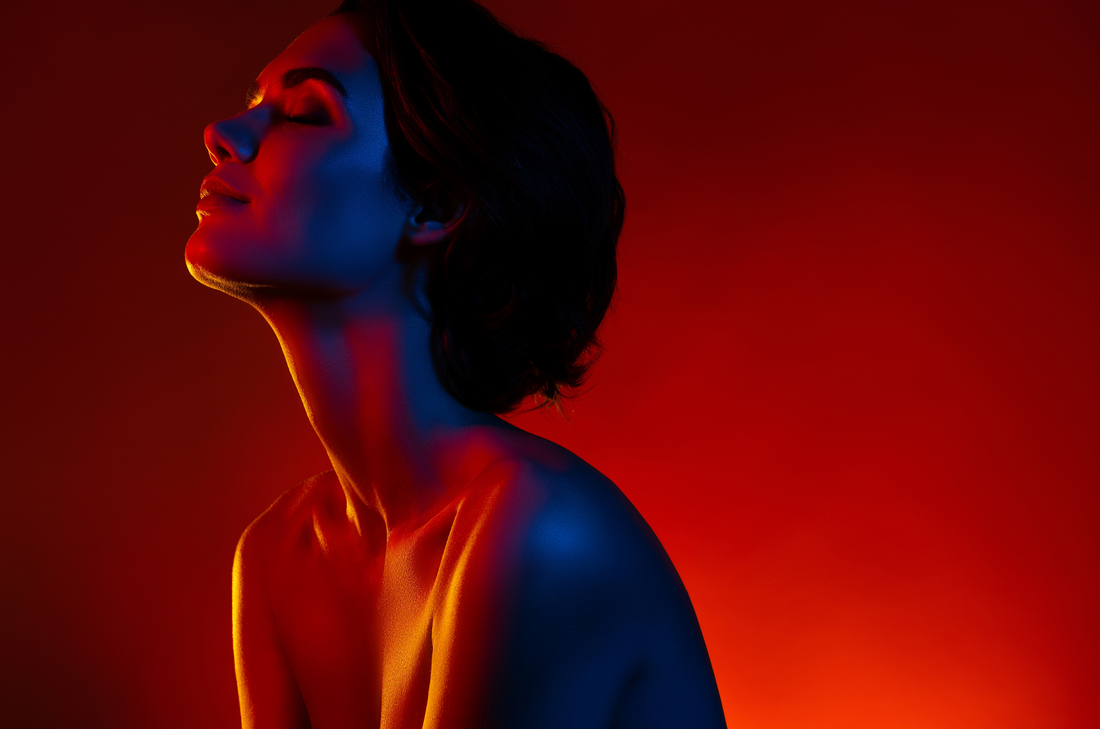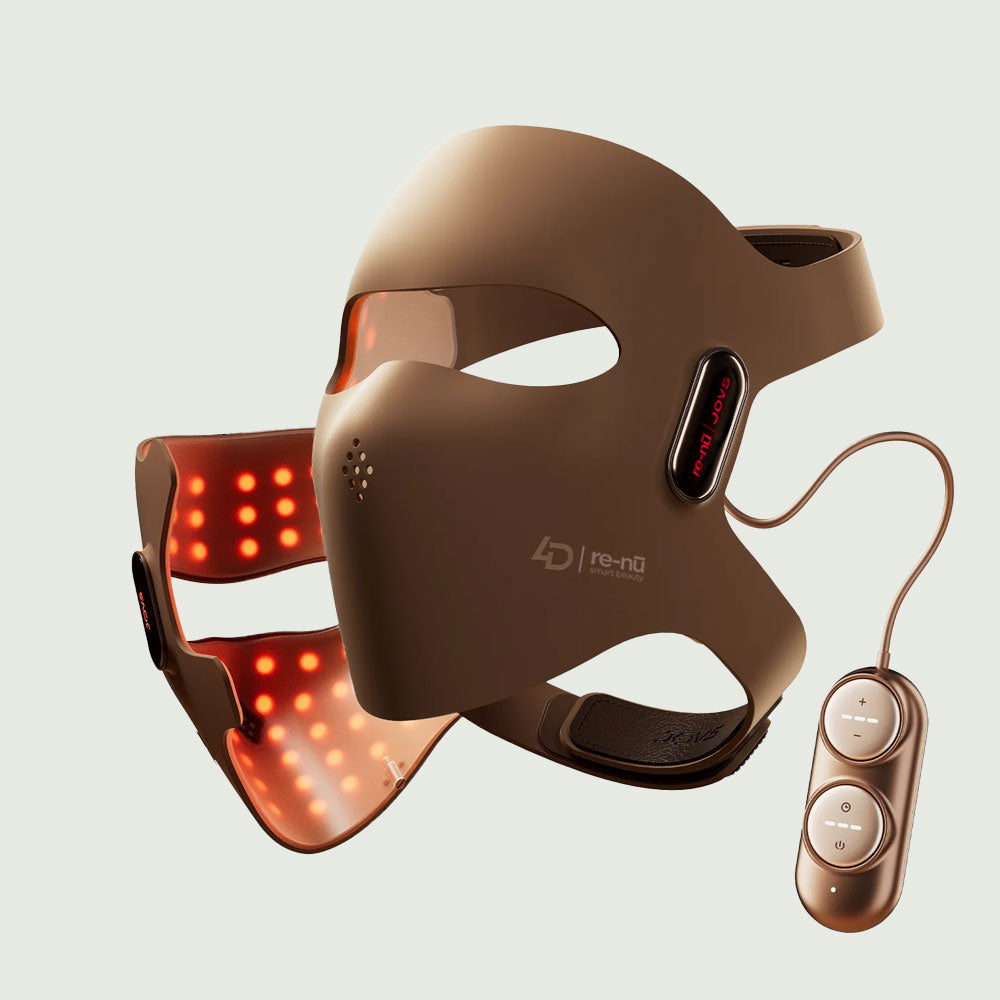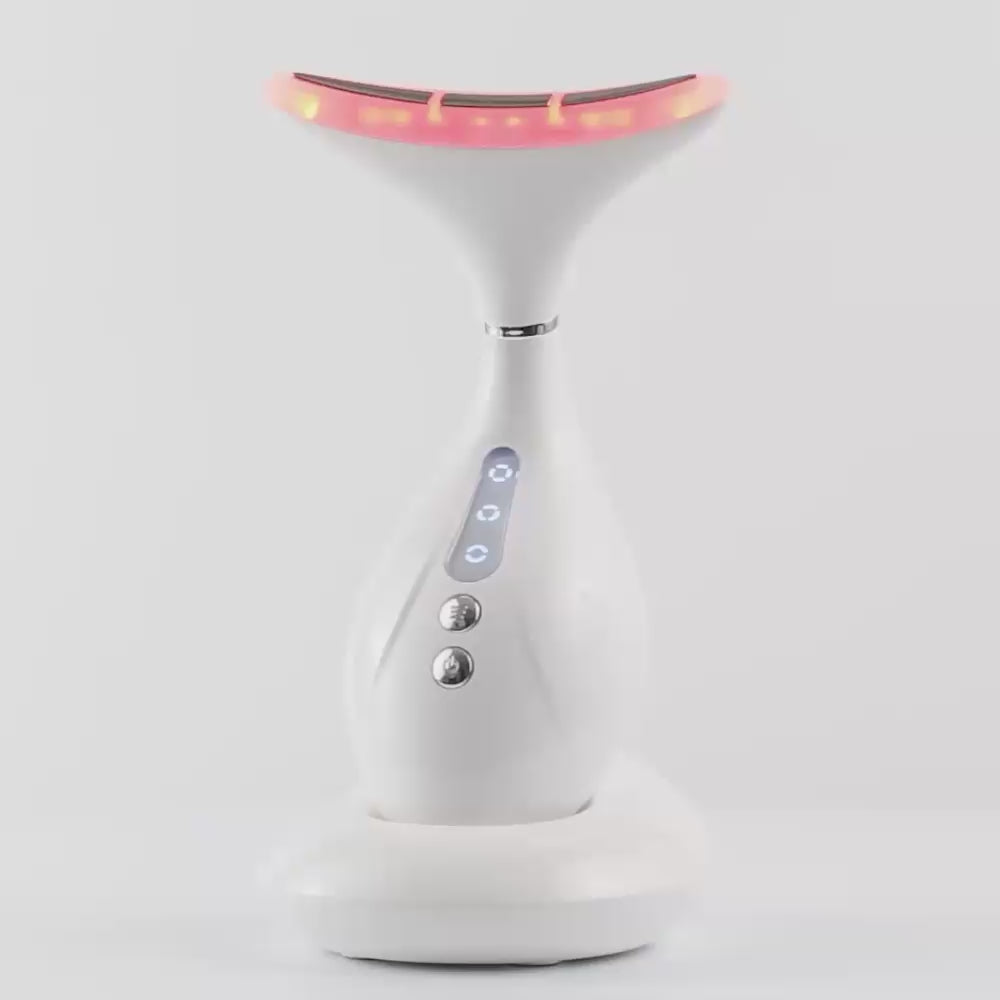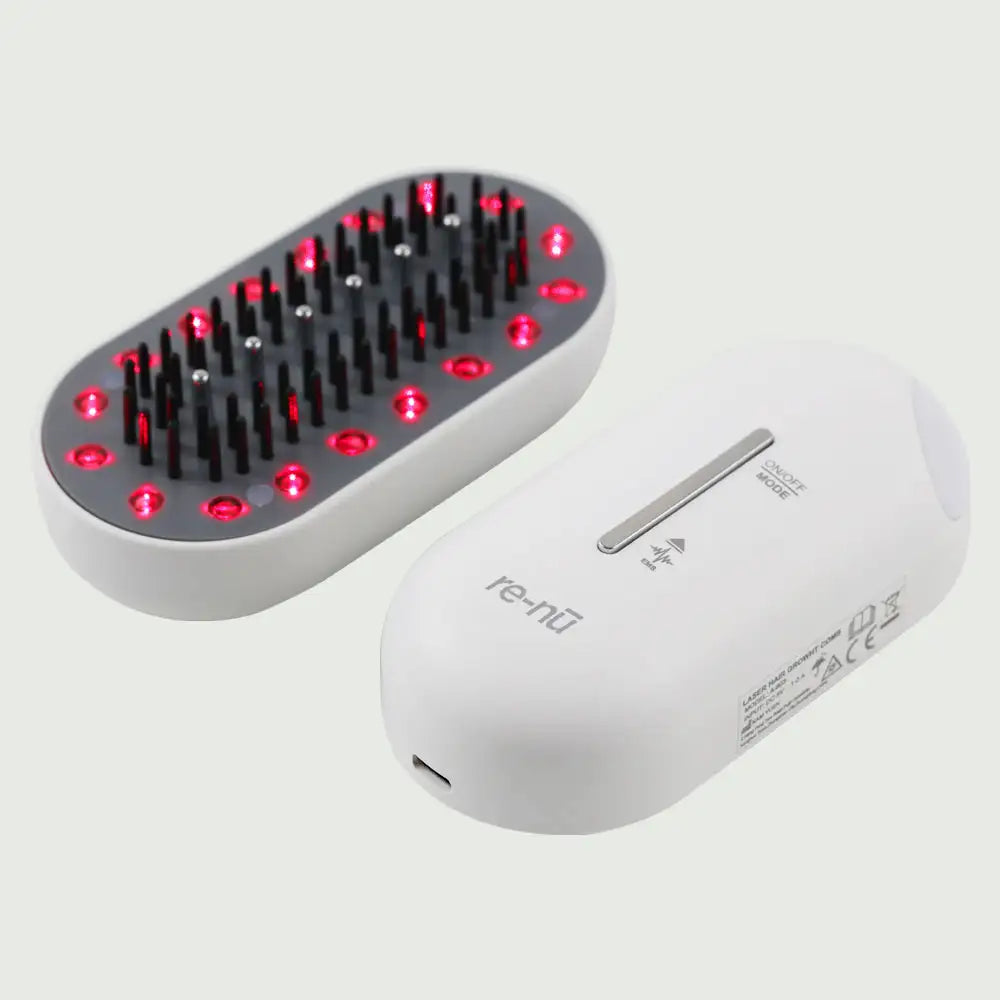From beauty editors to biohackers, red light therapy (RLT) is becoming a wellness essential. Once confined to dermatology clinics, this non-invasive, drug-free technology is now available in sleek, at-home devices. It promises not just smoother skin, but also faster healing, pain relief, and even hair regrowth.
So what is red light therapy really , and how does it deliver such a wide range of benefits? Let’s explore the science, applications, and safety behind this trending technology.
What Is Red Light Therapy?
Red light therapy, also called photobiomodulation (PBM) or low-level light therapy (LLLT), is a treatment that uses low-wavelength red and near-infrared light to stimulate cellular activity, enhance healing, and reduce inflammation.
It’s completely non-invasive and painless. The red or near-infrared light is absorbed by the skin and underlying tissues, triggering biological processes that help your body repair and regenerate naturally , all without chemicals, injections, or downtime.
How Does Red Light Therapy Work?
At the heart of red light therapy is cellular energy production.
Here’s what happens step-by-step:
Penetration of Light: Specific wavelengths (usually 630–850 nm) of red or near-infrared light are applied to the skin.
Mitochondrial Activation: These wavelengths are absorbed by mitochondria , the energy centers inside your cells.
ATP Boost: Absorption triggers an increase in ATP (adenosine triphosphate) , your cells’ fuel source.
Regeneration Begins: With more energy, your cells can repair damage, reduce inflammation, and generate new, healthy tissue faster.
The red light (around 630–660 nm) penetrates skin layers to rejuvenate the surface, while near-infrared light (810–850 nm) travels deeper into muscles and joints for broader healing benefits.
Main Benefits of Red Light Therapy
Red light therapy is incredibly versatile. Its effects span skin, hair, joints, and even mood.
Here are the top clinically-backed benefits:
1. Skin Rejuvenation
Stimulates collagen and elastin production
Reduces wrinkles, fine lines, and sagging
Fades hyperpigmentation, sun damage, and scars
Boosts circulation for a brighter, more even skin tone
2. Acne and Inflammation Control
Reduces redness and swelling linked to acne
Kills acne-causing bacteria (P. acnes)
Soothes rosacea and sensitive skin conditions
3. Wound Healing
Accelerates cell turnover and tissue repair
Promotes angiogenesis (formation of new blood vessels)
Useful after surgeries, burns, or cosmetic treatments like microneedling
4. Pain Relief
Eases joint and muscle pain
Improves symptoms of arthritis, fibromyalgia, and back pain
Speeds up recovery from workouts or physical strain
5. Hair Regrowth
Stimulates dormant hair follicles
Effective for androgenetic alopecia (pattern hair loss)
Increases density, thickness, and shine in thinning hair
6. Mental Wellness (Emerging Research)
May improve mood, sleep, and cognitive performance. Near-infrared wavelengths are being studied for brain stimulation and stress relief

Types of Red Light Therapy Devices
Not all red light devices are created equal. Here are the most common types used at home and in clinics:
|
Device Type |
Best For |
|
LED Face Masks |
Full-face anti-aging and acne treatment |
|
Handheld Wands |
Spot treatment for wrinkles or scars |
|
Full-Body Panels |
Pain relief, muscle recovery, skin tone |
|
Under-Eye Pads |
Puffiness, wrinkles, and dark circles |
|
Hair Growth Helmets/Caps |
Thinning hair and scalp health |
At re-nū Smart Beauty, we design FDA-cleared devices that combine red light, EMS, and vibration therapy to maximize your results at home.
Is Red Light Therapy Safe?
Yes, red light therapy is considered extremely safe when used as directed. It's:
Non-invasive
Painless
Drug-free
Suitable for all skin tones and types
Cautions:
Never shine red light directly into your eyes.
Don’t exceed recommended treatment times.
Consult with a dermatologist if you have skin conditions, are pregnant, or are undergoing medical treatments.
How Often Should You Use It?
For best results, consistency is key:
Face: 3–5 times per week, 10–15 minutes per session
Body or Hair: 3–4 times per week, up to 20 minutes per area
Results typically appear within 2–6 weeks, with continued improvement over 12 weeks
Pairing red light therapy with a solid skincare routine can further enhance results , think serums, moisturizers, and gentle cleansers.
Why Red Light Therapy Is the Future of Beauty
In 2025, consumers want real results without risks. That’s why red light therapy is growing in popularity:
It’s non-chemical
Delivers visible results
Works holistically with the body’s own repair systems
Whether you’re managing acne or simply want glowing, youthful skin, red light therapy gives you control over your skincare ,from home.
Ready to Experience the Power of Red Light?
Explore re-nū’s collection of clinically-inspired Red Light Therapy Devices , crafted for real results you can see and feel, right from the comfort of your home.
Frequently Asked Questions About Red Light Therapy
1. What does red light therapy actually do?
Red light therapy works by delivering specific wavelengths of light (usually between 630–850nm) to your skin and underlying tissue. These wavelengths stimulate cellular energy (ATP) production in the mitochondria, leading to better cell function, faster healing, reduced inflammation, and increased collagen and elastin. This helps improve skin tone, reduce fine lines, ease joint and muscle pain, and even support hair growth.
2. What are the side effects of red light therapy?
Red light therapy is considered extremely safe for most people, with minimal to no side effects when used as directed. Some users may experience mild redness, temporary dryness, or warmth at the treatment area. Overuse or using overly intense devices may cause slight irritation. It’s always best to follow the device guidelines and avoid direct eye exposure.
3. What does Mayo Clinic say about red light therapy?
The Mayo Clinic acknowledges that red light therapy (also known as low-level laser therapy or photobiomodulation) shows promise for a variety of applications like wound healing, skin rejuvenation, and pain management. However, they also note that more research is needed to establish standardized treatment protocols and long-term effects. As with any therapy, they recommend consulting a healthcare provider.
4. What is the average cost of a red light therapy session?
Professional red light therapy sessions can range from $30 to $100 per session depending on location and treatment type (e.g., skin rejuvenation vs. joint pain relief). Packages can make it more affordable, but over time, at-home red light devices are often a more cost-effective solution for consistent results.
5. Is 10 minutes of red light therapy enough?
Yes , for most face-focused or targeted skin treatments, 10–15 minutes per session is effective. Larger areas like the back or thighs may require 20–30 minutes. Frequency also matters more than duration; consistency (3–5x per week) is key for seeing results.
6. Can red light therapy reduce belly fat?
Some clinical studies suggest that red and near-infrared light can help reduce fat in targeted areas by affecting the mitochondria in fat cells, encouraging their breakdown. However, red light is not a substitute for diet and exercise, and results are typically mild unless combined with other lifestyle changes or EMS technology.
7. Is there anyone who shouldn't use red light therapy?
Yes. Red light therapy is not recommended for individuals who:
8. Is red light bad for your heart?
No , there’s no evidence that red light therapy is harmful to the heart. In fact, some studies suggest that near-infrared light may support better circulation and vascular health. However, individuals with heart conditions should always consult a doctor before using new wellness therapies.
9. Can you overdo red light therapy?
Yes , while red light therapy is generally safe, more isn't always better. Overuse may cause temporary skin irritation or reduce effectiveness due to cellular overstimulation. Stick to the recommended usage (usually 3–5 sessions per week, 10–20 minutes per area) to get the best results safely



